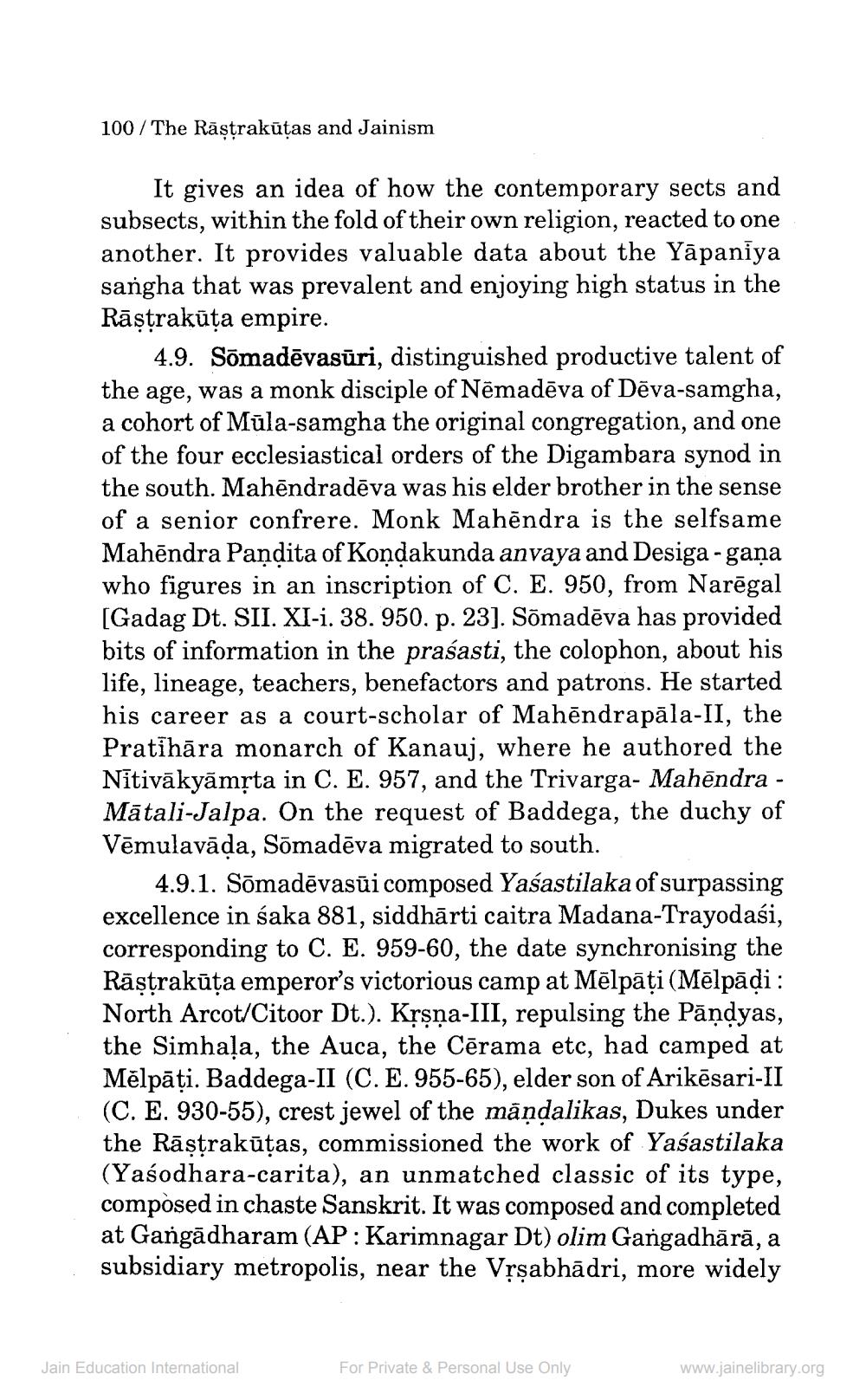________________
100 / The Rāștrakūtas and Jainism
It gives an idea of how the contemporary sects and subsects, within the fold of their own religion, reacted to one another. It provides valuable data about the Yāpaniya sangha that was prevalent and enjoying high status in the Rāştrakūța empire.
4.9. Sõmadēvasūri, distinguished productive talent of the age, was a monk disciple of Nēmadēva of Dēva-samgha, a cohort of Mūla-samgha the original congregation, and one of the four ecclesiastical orders of the Digambara synod in the south. Mahēndradēva was his elder brother in the sense of a senior confrere. Monk Mahēndra is the selfsame Mahēndra Pandita of Kondakunda anvaya and Desiga -gana who figures in an inscription of C. E. 950, from Narēgal [Gadag Dt. SII. XI-i. 38. 950. p. 23). Sõmadēva has provided bits of information in the prasasti, the colophon, about his life, lineage, teachers, benefactors and patrons. He started his career as a court-scholar of Mahēndrapāla-II, the Pratihāra monarch of Kanauj, where he authored the Nitivākyāmộta in C. E. 957, and the Trivarga- Mahēndra - Mātali-Jalpa. On the request of Baddega, the duchy of Vēmulavāda, Sõmadēva migrated to south.
4.9.1. Sõmadēvasūi composed Yasastilaka of surpassing excellence in saka 881, siddhārti caitra Madana-Trayodasi, corresponding to C. E. 959-60, the date synchronising the Rāştrakūta emperor's victorious camp at Mēlpāți (Mēlpādi: North Arcot/Citoor Dt.). Krşņa-III, repulsing the Pāņdyas, the Simhaļa, the Auca, the Cērama etc, had camped at Mélpāți. Baddega-II (C. E.955-65), elder son of Arikēsari-II (C. E. 930-55), crest jewel of the māņdalikas, Dukes under the Rāştrakūtas, commissioned the work of Yasastilaka (Yasodhara-carita), an unmatched classic of its type, composed in chaste Sanskrit. It was composed and completed at Gangādharam (AP : Karimnagar Dt) olim Gangadhārā, a subsidiary metropolis, near the Vrsabhādri, more widely
Jain Education International
For Private & Personal Use Only
www.jainelibrary.org




